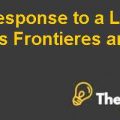Overview
The Energy Foundation is operating as an NGO in China and has been quite successful despite being an outsider as the country has very little room for external organizations. However, the company survived in this stringent environment and on the top of that built networks and the relationships in the country quite successfully. The Chinese environment has shown very rigid attitude towards the foreign and international NGOs and is not supportive at all with the engagement level very low.
However, the company focused on resolving the issues related to energy in the country instead of promoting the organization and spending heavy amount on developing strategies and programs for self-promotion unlike other NGOs. The company showed immense commitment with the mission of solving energy issues in the country and placed that as a greater objective. This strong commitment and flexible attitude of the organization allowed it to become adaptive to the changes in the culture and society and guided the organization in assessing and identifying the needs of the country.
However, the company has been quite successful despite showing no interest on taking the credit for the efforts made by the organization in resolving the issues. On the contrary the external changes have caused the issue which is why the president is lurking to develop a network strategy that will guide the firm to cope with these external changes.
Building Networks and Collaboration
EF China is quiet committed to build relationships in order to build strong and sustainable networks.
However, building networks and collaboration has not been an easy task in china as foreign NGOs are kept at a distance and are not allowed to operate easily. Besides that, the concept of non-profit organizations is not completely assimilated and understood in the Chinese culture. Therefore, the challenges were there but the firm stays committed to its objective and revitalized the strategy it followed in the US in an attempt to build networks and collaboration.
The first step of building networks and collaboration was to build relationships in the country with the people involved in decision making. In regard to this the key was to identify the people who are involved in decision-making and are part of advisory committee that will formulate the energy policy.
The second effort done by the company is regarding research and development as it guided in assessing the right people and talking to them on the right solutions, seeking advices form them and giving them the feedback and the advice in return. This strategy helped the company in developing and strong networks and collaboration in the country.
The Energy Foundation Catalyzing and Adapting Networks in China Case Solution
Strengths of EF China
The company or the organization is although committed to solve the energy issues in the country and help the country in developing a strong energy policy. However, the thing that the organization is quite strong at doing has contributed immensely in the overall success of the firm is the ideology to allow the Chinese people identify and resolve the issues themselves. Although the company provides the guideline, however, it encourages the people and the local decision maker to take the lead and solve their issues themselves.
Added Value
The organization provides technological assistance in identifying the issues and matching the solution with the issues. Besides that, it provides the people with vision, who are willing to work for the benefit of the country and government officials and align them on the same platform.
Challenges of Building Strategy upon Network and Collaboration
The most important challenge that the organizations will have to encounter while building a strategy upon network and collaboration is the complexity in measuring the performance. It becomes quite difficult for organizations to seek quantifiable measures to assess the performance and identify the loopholes in the strategy. The reason to this is the dependency over the associates or the partners with whom the relationships are built. In a collaborative effort it also becomes quite challenging to differentiate the performance of the individual organizations. Secondly, the factor of decency is also there to hinder the performance and making it more difficult to assess performance.
Application of EF China’s Approaches on Other Organizations
It is imperative to state the approaches, techniques and methods used by EF China have played a vital role in the overall success of the company and can be considered as a strong approach. However, such approaches cannot be applied to other organizations as these approaches restrict recognition and requires much effort and realize less gain. This is quite damaging and is not fruitful for any organization to grow further. Thus the application of the EF China approaches to any other organization is quite difficult....................
This is just a sample partial case solution. Please place the order on the website to order your own originally done case solution.













